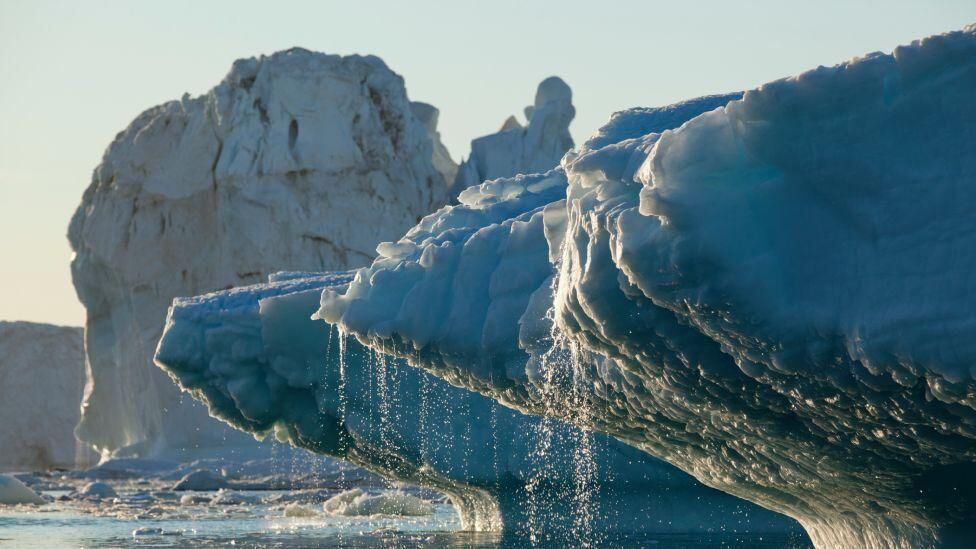The Earth’s axis of rotation tilted almost 80 centimeters to the east between 1993 and 2010.
And the cause is the displacement of large bodies of water due to the extraction and transport of groundwater, says a new study published in Geophysical Research Letters, a journal of the American Geophysical Union, AGU for its acronym in English.
LOOK: The key role of slaves and concubines in the “bloody world of succession” of the Ottoman Empire
displacement of water It also has an effect on sea level.
“Pumped groundwater evaporates into the atmosphere or runs off into rivers. It will end up in the oceans through precipitation or discharge,” Ki-Weon Seo, Professor of Earth Sciences at Seoul National University, South Korea, and lead author of the study, told BBC Mundo.
In this way, “water moves from the land to the oceans. This is redistribution of water.”
The ability of water to change the Earth’s rotation had already been discovered in 2016.
Another 2021 study focused on the impact on the Earth’s tilt axis of water loss in the polar regions, that is, ice that melted and flowed into the oceans.
But until now the specific contribution of groundwater to rotational changes was not known.
Footprint of human action
Earth’s pole of rotation is the point around which the planet revolves. That axis moves during a process called polar motion, when the position of Earth’s axis of rotation varies relative to the crust.
The variations in the position of the poles is what is known as polar drift and it occurs naturally.
Changes in the distribution of the planet’s mass cause the axis to move, thus causing the poles, the points where the Earth’s axis of rotation intersects the surface, to shift as well.
But the type of displacement that has been observed since the 1990s shows the imprint of human action.
The distribution of water on the planet affects how mass is distributed on our planet. Scientists point out that It’s like adding a little weight to a spinning top..
In the same way, the Earth will spin a little differently as the water moves.
“Earth’s pole of rotation actually changes a lot,” Seo notes.
“Our study shows that, among climate-related causes, groundwater redistribution has the greatest impact on pole rotation drift“.

The scientists further determined that redistributing water from the mid-latitudes has a greater impact on the pole of rotation.
During the study period, most of the water was redistributed in western North America and northwestern Indiaboth cases in mid-latitudes.
Efforts by countries to reduce groundwater abstraction, especially in such sensitive regions, could theoretically alter changes in polar drift. But that will happen only if those efforts are sustained for decades, Seo says.
The impact of pumping water
In the new study, the scientists modeled observed changes in Earth’s axis of rotation and the movement of water.
First, they considered only the displacements of water caused by the melting of ice sheets and glaciers. And then they added different groundwater redistribution scenarios.
The model only matched the recorded inclination change when a groundwater redistribution of 2,150 gigatons.
Previous studies have estimated that humans have pumped 2,150 gigatons of groundwater, an amount equivalent to more than 6 millimeters of sea level risebetween 1993 and 2010.

The new study is an important contribution, says Surendra Adhikari, a research scientist at NASA’s Jet Propulsion Laboratory who was not involved in this study.
“They have quantified the role of groundwater pumping in polar movement, and that is very significant.”
Adhikari was one of the authors of the 2016 study on the impact of water redistribution on polar drift.

Seo clarifies that the redistribution of water does not affect the seasons.
“Earth’s axis of rotation normally shifts by several meters in a year. Thus, a variation of about a meter over about two decades would not affect the climate”.
The important thing for the scientist is to have verified “that the extraction of groundwater affects the axis of rotation of the Earth.”
“We use the axis of rotation as observational evidence for groundwater pumping.”
“As a parent I am worried”
“I am very pleased to have found a hitherto unexplained cause of the changes in the axis of rotation,” says Seo.
“On the other hand, as a resident of Earth and a parent, I am concerned and surprised to see groundwater pumping as another source of sea level rise.”

The intensification of droughts due to climate change may lead to increased extraction and transport of groundwater.
The scientist is concerned about the link between these movements of water masses and the rise in sea level.
“This is a general concern because many of us live in coastal cities,” Seo notes.
“My generation would be fine, but my children could be in trouble due to rising sea levels”.
Drafting
BBC News World
Source: Elcomercio
I am Jack Morton and I work in 24 News Recorder. I mostly cover world news and I have also authored 24 news recorder. I find this work highly interesting and it allows me to keep up with current events happening around the world.

:quality(75)/cloudfront-us-east-1.images.arcpublishing.com/elcomercio/PUGFGKHSYVBHLEMV6LQTTUMBNU.jpg)

:quality(75)/cloudfront-us-east-1.images.arcpublishing.com/elcomercio/6T6INW47VFEAZBZ5N2XYOVHXHI.jpg)
:quality(75)/cloudfront-us-east-1.images.arcpublishing.com/elcomercio/WFGVGDBK7ZFTJGAZVAZG6FD6TI.jpg)
:quality(75)/cloudfront-us-east-1.images.arcpublishing.com/elcomercio/OCBSDWM6DNECBBKZJ6PCWJB67Q.jpg)
:quality(75)/cloudfront-us-east-1.images.arcpublishing.com/elcomercio/SY3SHBR6JBE2NCKXW5SVUCDX2U.jpg)
